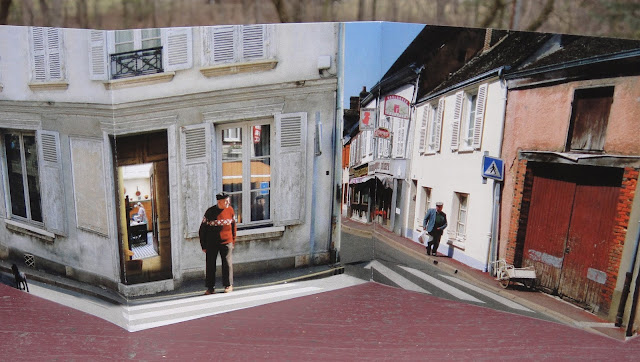 |
| The title of this work, Illiers Combray, refers to two French towns, one real and one imagined. "Illiers" was originally the name of a town near the city of Chartres and "Combray" is the name the great French novelist, Marcel Proust, gave it in his semi-biographical novel "In Search of Lost Time," 1913. In 1971, the people of Illiers decided as a tribute to Proust's literary masterpiece, to change the town's name to Illiers-Combray, on the occasion of the first centenary of the author's birth. This fascinating double-sided accordion was the result of both artists spending time together in Illiers-Combray, and then going their separate ways to work on their respectives parts. One side displays a much more poetic and impressionistic mixing and overlay of images, as compared to the reverse which is a long panoramic photograph of this quaint country village. Irvine's sound pieces also reflect this split, with one cd remixing village sounds and the other a dense and much more abstract web of sound. It's taken me a long time to finally discover this accordion by Douglas, and also to fully understand its place and importance in her shift to working with the scroll format. For an interesting summary of this new direction, and a smart piece of writing about her work, here's an article by Clive Phillpot: Postscript: ‘The Pond at Deuchar’ E-scroll | Tate 59 pages at 3.75" (h) x 3.5" (w), total length 17ft 2.5". |
everything about accordion publications, with a special interest in artists' accordions. stephen perkins [perkins100@gmail.com]
Saturday, March 19, 2016
Helen Douglas and Zoe Irvine, Illiers Combray, Aeolus & Weproductions, 2004, 2nd edition.
Subscribe to:
Comments (Atom)










